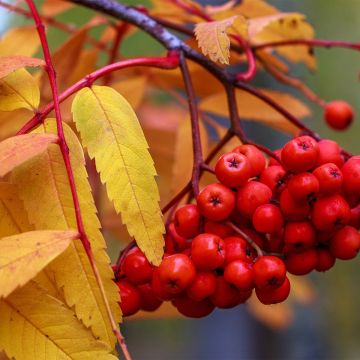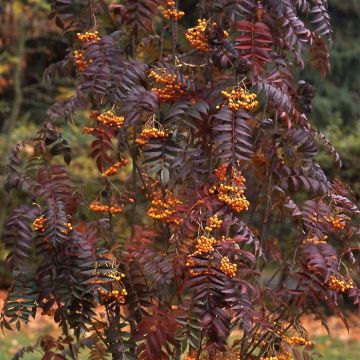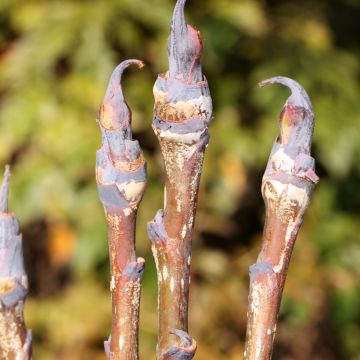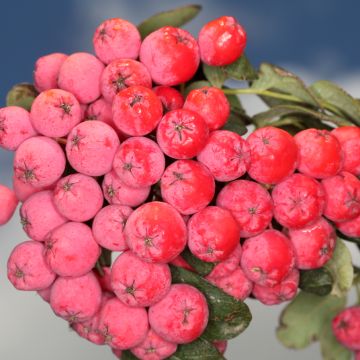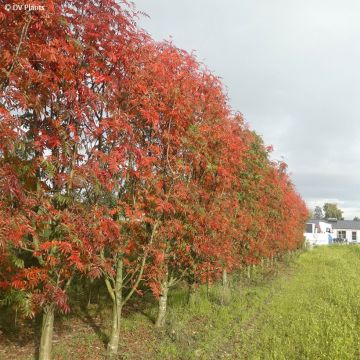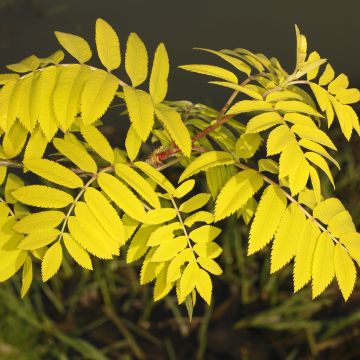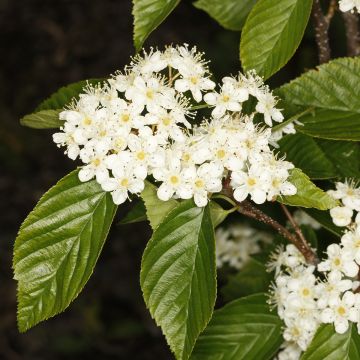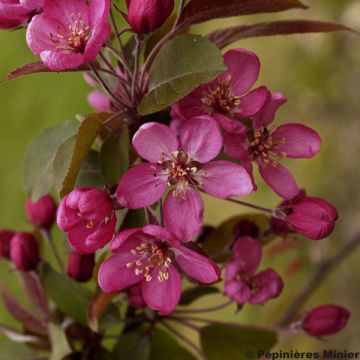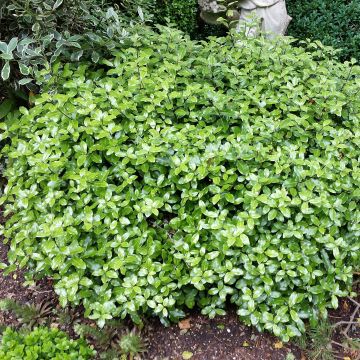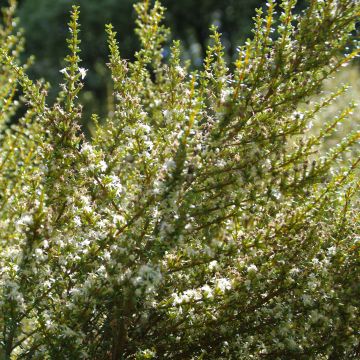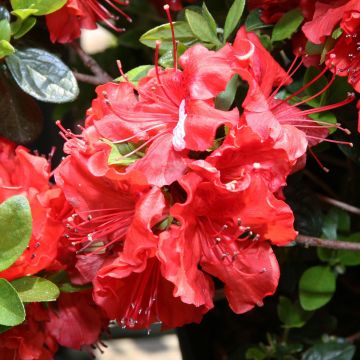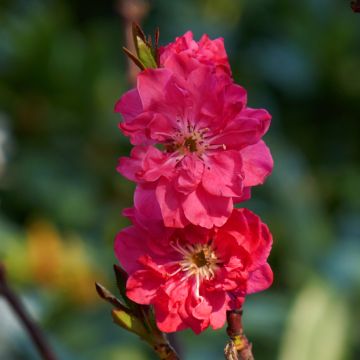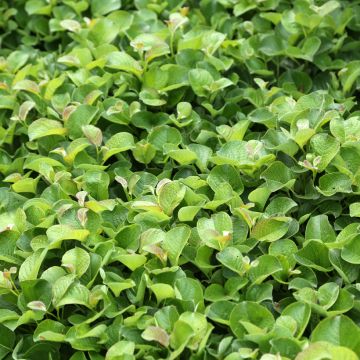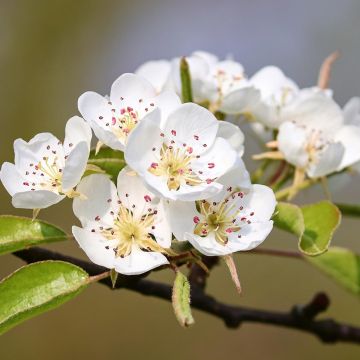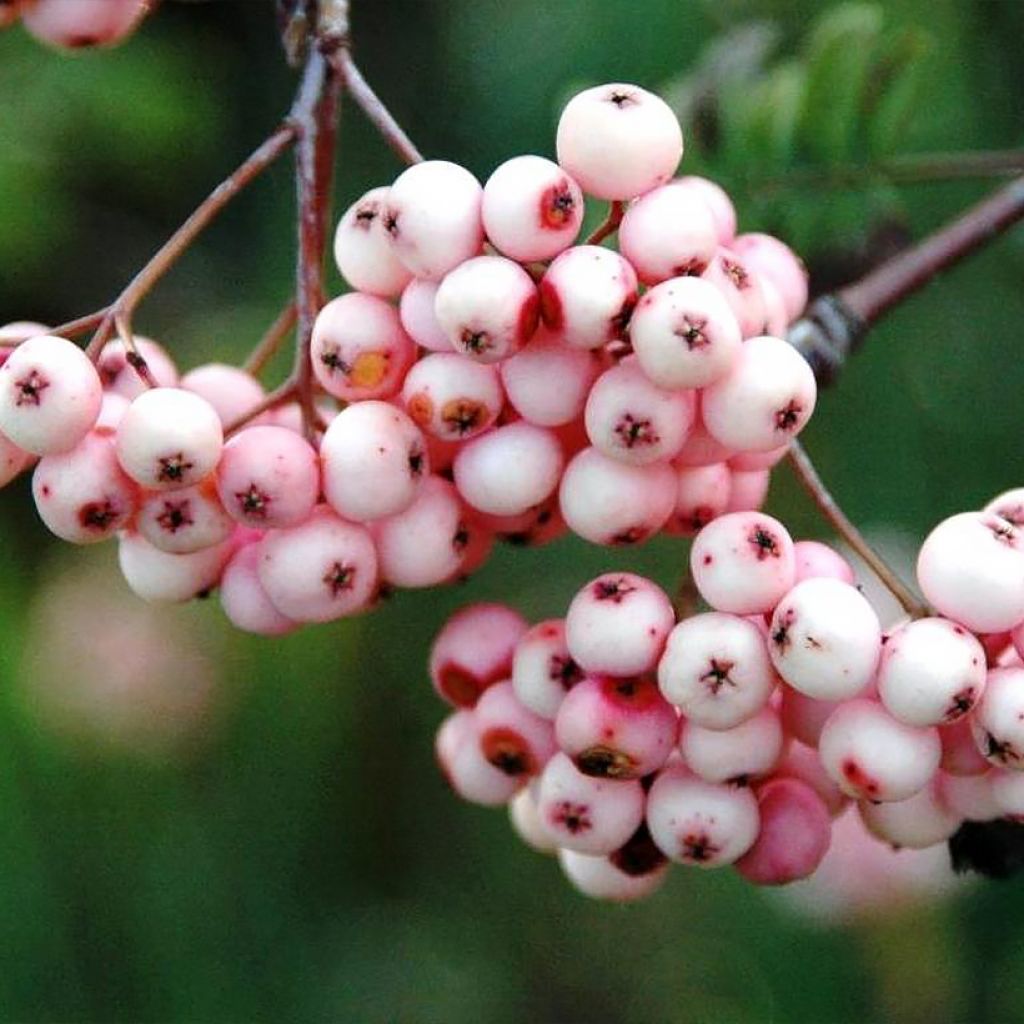

Sorbier - Sorbus Pink Veil
Sorbus arnoldiana Pink Veil
Sorbus x arnoldiana Pink Veil
Pink Veil Mountain Ash
Special offer!
Receive a €20 voucher for any order over €90 (excluding delivery costs, credit notes, and plastic-free options)!
1- Add your favorite plants to your cart.
2- Once you have reached €90, confirm your order (you can even choose the delivery date!).
3- As soon as your order is shipped, you will receive an email containing your voucher code, valid for 3 months (90 days).
Your voucher is unique and can only be used once, for any order with a minimum value of €20, excluding delivery costs.
Can be combined with other current offers, non-divisible and non-refundable.
Home or relay delivery (depending on size and destination)
Schedule delivery date,
and select date in basket
This plant carries a 24 months recovery warranty
More information
We guarantee the quality of our plants for a full growing cycle, and will replace at our expense any plant that fails to recover under normal climatic and planting conditions.

Would this plant suit my garden?
Set up your Plantfit profile →
Description
The Sorbus x arnoldiana Pink Veil is one of those small trees well suited to both small urban gardens and large rural areas, thanks to its natural appearance. It has beautiful deciduous compound foliage, not exceeding 4m (13ft) in height, with a reasonably slender habit. It produces creamy white flowers in May-June, which give way to pretty decorative pink berries, clearly visible against the green foliage. Towards the end of the season, as autumn arrives, the leaves take on warm colours, ranging from yellow to dark red-orange. Extremely tolerant of different soil types and exposures, it only needs to be protected from stagnant water and given a bit of light. It can even tolerate poor and dry soils and is very hardy, coping with frosts well.
The Sorbus x arnoldiana belongs to the very important Rosaceae family, both from an ornamental, ecological and economic point of view, with around a hundred genera and over 5000 species. Indeed, it includes not only many garden species (Amelanchier, Pyracantha, Crataegus, Potentilla... and of course, Roses!) but also wild species found in our countryside and forests (Wild strawberry, Common avens, Burnet) and it is responsible for most of our temperate and Mediterranean fruit trees (Apple trees, Pear trees, Cherry trees, Plum trees, Raspberry bushes, Apricot trees, Peach trees...).
The Sorbus genus includes dozens of species, many of which (170+) are European, the most famous being the Mountain ash. This genus is divided into two groups: the Mountain ashes, with compound leaves, and the Whitebeams, with simple leaves. The Sorbus x arnoldiana is a hybrid resulting from the cross-breeding between the Mountain ash (Sorbus aucuparia) and the Chinese Whitebeam (Sorbus discolour), which is native to northern China, where it can reach up to 10m (33ft) in height. This hybrid was described in 1920 by the great botanist Alfred Rehder, a curator at the Arnold Arboretum in the United States for many years, and wrote a plant identification book that is still a reference today.
'Pink Veil' is a cultivar with moderate development, generally reaching a height of 3.50m (after more than 10 years of planting), possibly 4m (13ft), with a width of about 2 to 3m (7 to 10ft). This small tree has a rather slender habit, with upright branches at the base, which open up to form a more or less spherical crown. It has a smooth, light brown bark, which slightly cracks with age, and odd-pinnate compound leaves, usually consisting of 11 to 13 leaflets (one at the end and the others facing each other). Measuring 15 to 20cm (6 to 8in) in length, they are green to dark green depending on the exposure. In May-June, it produces creamy white flowers grouped in large corymbs up to 15cm (6in) in diameter, which pollinating insects love. These flowers then develop into decorative fruits, small berries about 8mm (1in) in diameter, with an attractive pale pink colour, sometimes turning pink-red. Ripening in September-October, these fruits stand out visually against the still green foliage and attract birds. Then, it is the turn of the foliage to put on a show, with beautiful autumn colours ranging from yellow to more or less dark red-orange, ending the season in beauty.
This mountain ash is an undemanding tree that adapts to most soils, even acidic or moderately chalky, as long as they are well-drained. Preferring freshness, it can nevertheless withstand a temporary drought once well established. Very hardy, down to -25°C (1°F) and below, it tolerates urban pollution well, making it a perfect choice for small city gardens.
The Sorbus x arnoldiana Pink Veil will be appreciated for its real ornamental qualities and compactness, allowing it to find its place even in small gardens. Both ornamental and beneficial to animal biodiversity, its slightly wild natural appearance also makes it easy to integrate into a rural environment. You can plant the Acer campestre Carnival next to it, a moderately sized Field maple with attractive green foliage variegated with white and pinkish young shoots. With its golden yellow foliage, the Golden cornel (Cornus mas Aurea) is another horticultural variation of wild plants that will accompany your Pink Veil Mountain ash in the same spirit.
Sorbus arnoldiana Pink Veil in pictures


Plant habit
Flowering
Foliage
Botanical data
Sorbus
x arnoldiana
Pink Veil
Rosaceae
Pink Veil Mountain Ash
Cultivar or hybrid
Other Sorbus - Mountain Ash
View all →Planting and care
The Sorbus x arnodiana 'Pink Veil' thrives in the sun but grows in partial shade. It is a tree that does not like bright light and high temperatures too much. Place it in a sheltered location to prevent it from being uprooted by prevailing winds. It prefers rich, moist soil but requires a well-drained, not-too-wet location. It grows well in loamy-sandy or clay-sandy soil, dry or slightly moist, preferably with an acidic or neutral pH. It tolerates short periods of drought quite well. Water it during very dry periods, especially during the first few years.
Planting period
Intended location
Care
Planting & care advice
This item has not been reviewed yet - be the first to leave a review about it.
Similar products
Haven't found what you were looking for?
Hardiness is the lowest winter temperature a plant can endure without suffering serious damage or even dying. However, hardiness is affected by location (a sheltered area, such as a patio), protection (winter cover) and soil type (hardiness is improved by well-drained soil).

Photo Sharing Terms & Conditions
In order to encourage gardeners to interact and share their experiences, Promesse de fleurs offers various media enabling content to be uploaded onto its Site - in particular via the ‘Photo sharing’ module.
The User agrees to refrain from:
- Posting any content that is illegal, prejudicial, insulting, racist, inciteful to hatred, revisionist, contrary to public decency, that infringes on privacy or on the privacy rights of third parties, in particular the publicity rights of persons and goods, intellectual property rights, or the right to privacy.
- Submitting content on behalf of a third party;
- Impersonate the identity of a third party and/or publish any personal information about a third party;
In general, the User undertakes to refrain from any unethical behaviour.
All Content (in particular text, comments, files, images, photos, videos, creative works, etc.), which may be subject to property or intellectual property rights, image or other private rights, shall remain the property of the User, subject to the limited rights granted by the terms of the licence granted by Promesse de fleurs as stated below. Users are at liberty to publish or not to publish such Content on the Site, notably via the ‘Photo Sharing’ facility, and accept that this Content shall be made public and freely accessible, notably on the Internet.
Users further acknowledge, undertake to have ,and guarantee that they hold all necessary rights and permissions to publish such material on the Site, in particular with regard to the legislation in force pertaining to any privacy, property, intellectual property, image, or contractual rights, or rights of any other nature. By publishing such Content on the Site, Users acknowledge accepting full liability as publishers of the Content within the meaning of the law, and grant Promesse de fleurs, free of charge, an inclusive, worldwide licence for the said Content for the entire duration of its publication, including all reproduction, representation, up/downloading, displaying, performing, transmission, and storage rights.
Users also grant permission for their name to be linked to the Content and accept that this link may not always be made available.
By engaging in posting material, Users consent to their Content becoming automatically accessible on the Internet, in particular on other sites and/or blogs and/or web pages of the Promesse de fleurs site, including in particular social pages and the Promesse de fleurs catalogue.
Users may secure the removal of entrusted content free of charge by issuing a simple request via our contact form.
The flowering period indicated on our website applies to countries and regions located in USDA zone 8 (France, the United Kingdom, Ireland, the Netherlands, etc.)
It will vary according to where you live:
- In zones 9 to 10 (Italy, Spain, Greece, etc.), flowering will occur about 2 to 4 weeks earlier.
- In zones 6 to 7 (Germany, Poland, Slovenia, and lower mountainous regions), flowering will be delayed by 2 to 3 weeks.
- In zone 5 (Central Europe, Scandinavia), blooming will be delayed by 3 to 5 weeks.
In temperate climates, pruning of spring-flowering shrubs (forsythia, spireas, etc.) should be done just after flowering.
Pruning of summer-flowering shrubs (Indian Lilac, Perovskia, etc.) can be done in winter or spring.
In cold regions as well as with frost-sensitive plants, avoid pruning too early when severe frosts may still occur.
The planting period indicated on our website applies to countries and regions located in USDA zone 8 (France, United Kingdom, Ireland, Netherlands).
It will vary according to where you live:
- In Mediterranean zones (Marseille, Madrid, Milan, etc.), autumn and winter are the best planting periods.
- In continental zones (Strasbourg, Munich, Vienna, etc.), delay planting by 2 to 3 weeks in spring and bring it forward by 2 to 4 weeks in autumn.
- In mountainous regions (the Alps, Pyrenees, Carpathians, etc.), it is best to plant in late spring (May-June) or late summer (August-September).
The harvesting period indicated on our website applies to countries and regions in USDA zone 8 (France, England, Ireland, the Netherlands).
In colder areas (Scandinavia, Poland, Austria...) fruit and vegetable harvests are likely to be delayed by 3-4 weeks.
In warmer areas (Italy, Spain, Greece, etc.), harvesting will probably take place earlier, depending on weather conditions.
The sowing periods indicated on our website apply to countries and regions within USDA Zone 8 (France, UK, Ireland, Netherlands).
In colder areas (Scandinavia, Poland, Austria...), delay any outdoor sowing by 3-4 weeks, or sow under glass.
In warmer climes (Italy, Spain, Greece, etc.), bring outdoor sowing forward by a few weeks.
































